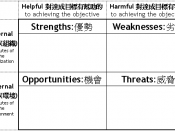In the Armed Forces of the United States, A Command Climate Survey (CCS) is used by the Commander to review organizational factors such as leadership, cohesion, morale, and equal opportunity which can make a profound impact on the effectiveness of the unit (Army Research Institute Website, 2008). This survey provides Army, Navy, Air Force and Marine Corps Commanders with a collective attitude and input from every service member and civilian under their cognizance, and therefore, is of immeasurable value when conducted effectively and efficiently. Frequently, however, the surveys are poorly timed, consisting of canned and impersonal questions, and delivered using poor methods. Furthermore, analysis tends to be one sided and reaching instead of objective. Perhaps the single greatest root cause for negative aspects of this outstanding tool can be narrowed down to a lack of diversity in the process.
Inserting Diversity into Problem SolvingProblem solving can take many shapes and forms such as the cause and effect diagrams, SWOT Analysis, flow charts, system diagrams or PEST analysis. All of these processes include some commonly known problem solving steps which include the following elements:Identification of the relevant issues, acknowledgement of everyone's personal interests, development of solutions, evaluation of the solutions and selection of the best solution. Diversity in each of these five steps pertaining to the planning of a Command Climate Survey will help reduce or eliminate some of the pitfalls identified and experienced in the introduction.
Identification of Relevant IssuesThe initial step in the problem solving process is the identification of the relevant issues. In a command climate survey, this is paramount to ensuring the questions posed to the command are going to provide valuable insight to the commander and not just meet a topical requirement. Using a diverse body of people in the planning of...


